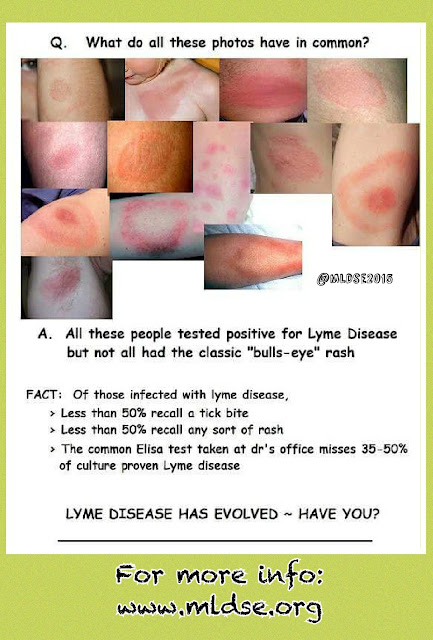Time to Take Tick-borne Disease Seriously
Author: Paula Jackson Jones
Published: 05/12/2017
The first paragraph of the Executive Summary of the 2017 Maine Lyme
Legislature Report states as follows:
Lyme disease is a notifiable condition in the State of Maine. The
goal of Lyme disease surveillance is to help define demographic, geographic,
and seasonal distribution; monitor disease trends; identify risk factors for
transmission; and promote prevention and education efforts among the public and
medical communities. Reported cases are classified as confirmed, probable, and
suspect based on clinical symptoms and laboratory testing interpreted using
criteria established by federal CDC. The surveillance case definition is not
intended to be used in clinical diagnosis. Lyme disease surveillance is
passive, dependent upon reporting, and therefore likely to be an
under-representation of the true burden of Lyme disease in Maine. Federal
CDC released a statement in 2013 that the true burden of Lyme disease may be up
to ten times the number of reported cases.
Some statistical data to think about. In 2016, 1,439 confirmed and probable cases
were reported (at a rate of 108.2 cases per 100,00 persons in Maine), but in
theory, we could be actually looking at something closer to 14,390 cases ~ and
that would be only the cases that tested positive by Federal CDC surveillance
criteria. Thirty three percent of
reported cases were from Southern Maine with twenty three percent from Midcoast
(Knox, Lincoln, Sagadahoc and Waldo counties).
Most common symptoms reported was the bulls-eye rash in 50% of
reported cases. Joint swelling in 30% and Bells Palsy/cranial neuritis in 11%.
Sixty four cases were hospitalized. Forty-one percent of cases were female,
fifty nine were male and the average age was 45, however, there were confirmed
reports of diagnosis from age one to ninety five.
Other Tick-borne Diseases emerging in Maine. Borrelia Burgdorferi
(Lyme Disease) is not the only tick-borne disease that ticks in Maine are
carrying. Among confirmed reports were
positive cases of Anaplasmosis, Babesiosis, Borrelia miyamotoi, Erlichiosis,
Powassan and Spotted Fever Rickettsiosis. In 2015, the Maine CDC reported that
over 50% of all ticks in Maine carried some tick-borne disease. However,
looking at the tick, one has no way of knowing if or what that tick may be
carrying. There are labs that you can
send the tick to to have it tested.
With confirmed and probable reports of these tick-borne diseases
emerging here in Maine, the Maine CDC continues to emphasize prevention. My organization, Midcoast Lyme Disease Support & Education,
gives year round prevention talks with heavy emphasis on The Five Points of
Prevention (Skin, Clothing, Pets, Homes and Yards). Following these practices,
it reduces the risk of having a tick encounter and thus, lower your risk for
contracting a tick-borne disease.
We also hold monthly Lyme support meetings that are open to the public so that those who are afflicted by Lyme and tick-borne disease or those who want to learn more can come and listen, share and leave with information, education, direction and connections valuable resources such as referrals to lyme literate providers and connections to financial assistance for testing and treatment options.
We also hold monthly Lyme support meetings that are open to the public so that those who are afflicted by Lyme and tick-borne disease or those who want to learn more can come and listen, share and leave with information, education, direction and connections valuable resources such as referrals to lyme literate providers and connections to financial assistance for testing and treatment options.
Bottom line, Lyme and tick-borne diseases is not to be downplayed and ignored. If you or someone that you know needs help ~ please reach out to us
~ Paula





Comments
Post a Comment